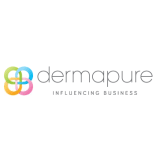This informal CPD article on ‘Pigmentation - The Full Story’ was provided by Dermapure, who inspire skincare professionals into realising their business potential by blending unparalleled brands with an exceptional approach to customer care.
Pigmentation – The Full Story
Everybody has pigment in their skin as it is needed to give the skin its colour, and also to give hair and eye colour. This pigment is called melanin and is produced by cells called melanocytes. Melanocytes are our army of protective cells and will react when the skin is exposed to UV rays, by sending more melanin up to the surface of the skin to protect the deeper layers from damage that is caused by these external aggressors. This is our skin’s natural defence mechanism and we can see this take effect when we tan.
Everybody wants that “healthy glow” and to be tanned but do not realise that this is actually causing damage to their skin, and excessive tanning or sun exposure can lead onto more serious conditions such as skin cancer, or the destruction of the melanocytes which will lead to an irreversible whitening of the skin, known as hypo pigmentation.
A prime example of someone who destroyed their melanocytes is Michael Jackson, last time we saw him he was under an umbrella as he had destroyed his army of protective cells, so his skin would not naturally be protected by melanin in response to UV. His skin would just burn or blister so he had to keep completely shaded.
There are two main types of pigmentation, known as hyper pigmentation which is the darkening of the skin, and hypo pigmentation which is the lightening/whitening of the skin. Hyper pigmentation is the only type of pigmentation that can be treated with the correct skincare products and treatments such as chemical peels, and is usually caused by the following factors:
- Sun Exposure including sunbeds/UV damage
- Hormones; hormonal imbalance such as PCOS or Endometriosis and pregnancy
- Stress
- Medication and herbal remedies
- Acne
- Heat and light trauma
Whereas Hypo pigmentation cannot be treated with skincare and would need to be assessed by a medical practitioner and is caused by:
- Disease
- Hereditary/Albinism
- Injury
- Burns
- Lack/loss of melanocytes
In addition to our Melanocytes producing the pigment melanin we also have another process happening within our skin and this is called Melanogenesis. This is the over production of pigment and occurs when there is a chemical reaction between an enzyme naturally in our skin called Tyrosine and the copper catalyst Tyrosinase. This process is also stimulated by UV rays as this is our natural protection. UVA rays are the deepest penetrating and can travel 300 times deeper than UVB, whereas UVB rays are more superficial but these cause us to burn or tan. Did you know 95% of premature ageing of the skin can be due to sun damage?!















